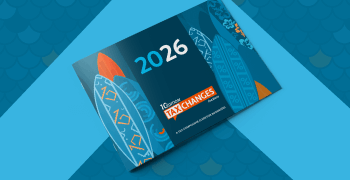New Mexico to tax out-of-state sellers and marketplace providers, July 2019
New Mexico is the latest of more than 35 states to adopt economic nexus and impose a sales tax collection requirement on remote businesses that have a certain amount of economic activity in the state.
Starting July 1, 2019, an out-of-state seller or marketplace provider with no physical presence in New Mexico is “engaging in business” in the state if, in the previous calendar year, it has at least $100,000 in total taxable gross receipts from in-state sales. Instead of taxing sales, as is the case with sales tax, New Mexico taxes the gross receipts of business engaged in business in New Mexico.
Though all receipts are presumed taxable in New Mexico, House Bill 6 specifies the $100,000 threshold applies to “receipts from sales, leases and licenses of tangible personal property, sales of licenses and sales of services and licenses for use of real property sourced to this state.” Once the threshold has been met, a retailer must register with the New Mexico Department of Taxation and Revenue and remit the state gross receipts tax as required by law.
Businesses must separately state gross receipts tax on bills or provide a statement that the tax is included in the amount billed.
Local gross receipts tax and the sourcing of sales
Although gross receipts tax is levied at the city and county level in New Mexico, remote retailers and marketplace providers won’t be liable for city and county gross receipts tax until July 1, 2021. This is to allow the state time to adopt new sourcing rules that determine the rate of tax to apply to each transaction. New Mexico currently uses origin sourcing, basing the rate on the location of the seller. It plans to transition to destination sourcing, which bases the rate on the location of the consumer.
Marketplace sales
Marketplace providers like Amazon and eBay are required to collect and remit gross receipts tax on behalf of their marketplace sellers once the provider reaches the $100,000 threshold. As such, they’re the liable party: Generally, the Department of Taxation and Revenue will audit the marketplace provider — not the marketplace seller — with respect to gross receipts from transactions facilitated by a marketplace provider.
However, a marketplace provider is relieved of liability on gross receipts collected in error if the mistake is due to reliance on erroneous information provided by the seller.
HB 6 specifies that a marketplace seller may deduct receipts for sales facilitated by a marketplace provider, so long as the seller has documentation that the provider is registered with the department and has remitted or will remit the taxes due on the gross receipts from the seller’s marketplace sales. This suggests marketplace sellers may be required to register with the department even if all sales are conducted through a collecting marketplace. The department may clarify this issue prior to July 1, 2019.
Certified service providers
To help facilitate gross receipts tax compliance for out-of-state sellers, the Department of Taxation and Revenue is authorized “to provide information, upon which taxpayers may rely, as to the taxability of gross receipts from particular transactions, including taxability matrices.”
The department is also authorized “to establish standards for the certification of certified service providers (CSP) that offer software-based systems to enable taxpayers to properly determine the taxability of gross receipts from particular transactions.” This, too, can facilitate tax compliance for remote vendors. Handling tax manually is generally much more time-consuming and error-prone than relying on tax automation software.
Although New Mexico isn’t a member of the Streamlined Sales and Use Tax Agreement (SST), an organization created to simplify and reduce the costs associated with remote sales tax compliance, HB 6 uses the SST’s definition of a "certified service provider.” Avalara is an SST CSP.
Digital products
Finally, as of July 1, 2019, HB 6 extends the gross receipts tax to digital goods, defined as “a digital product, delivered electronically, including software, music, photography, video, reading material, an application, and a ringtone.”
Avalara’s free sales tax nexus tool can help you determine if you’re at risk of establishing economic nexus in New Mexico. Alternatively, the Avalara Professional Services team can provide a more in-depth nexus study.

Avalara Tax Changes 2026 is here
The 10th edition of our annual report engagingly breaks down key policies related to sales tax, tariffs, and VAT.
Stay up to date
Sign up for our free newsletter and stay up to date with the latest tax news.














